Total solar eclipse 2024 maps of the 'path of totality'
Make sure you're in the right place at the right time for the April 8 total solar eclipse.
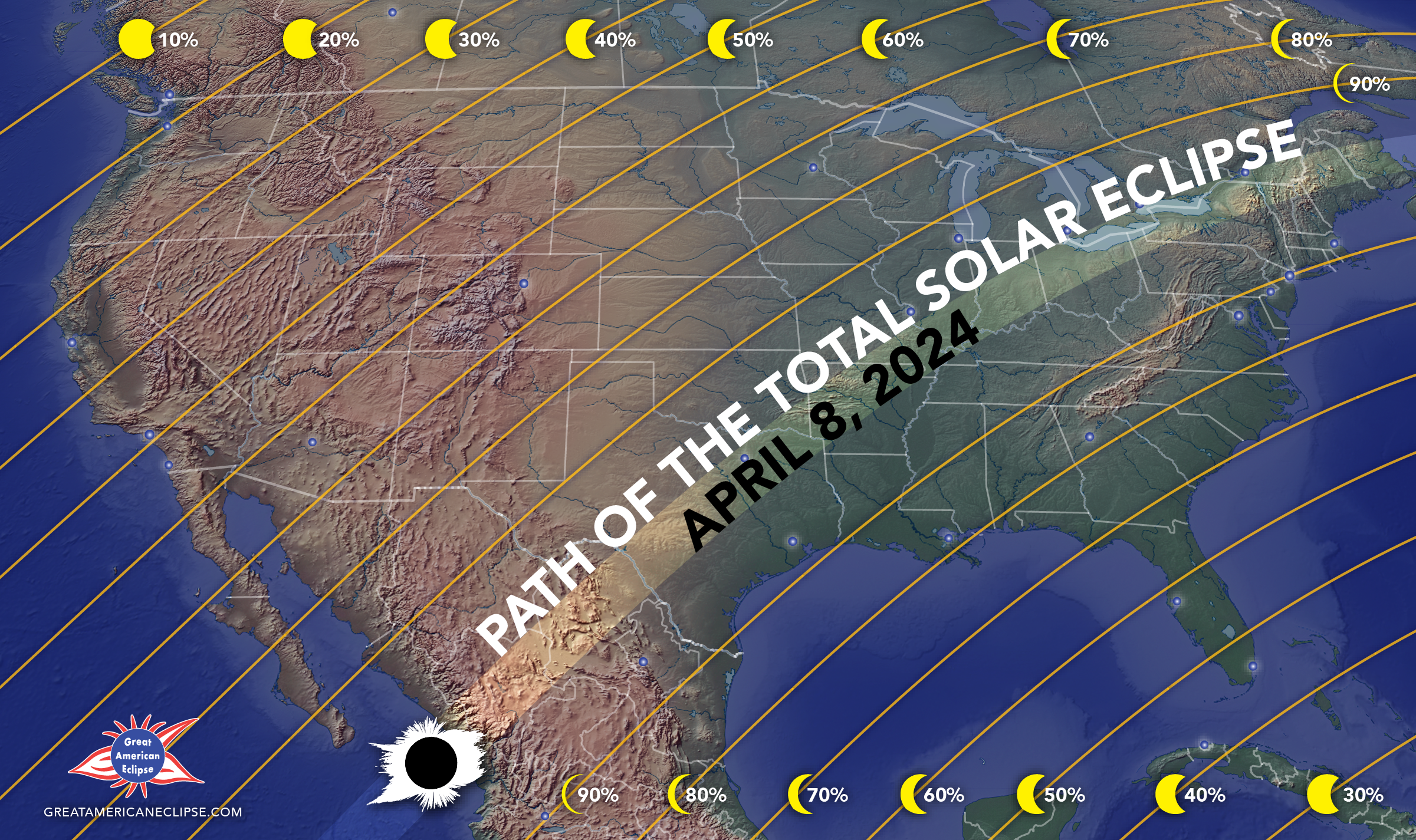
On Monday, April 8, 2024, Northern America will experience our next total solar eclipse, passing from the southwest to the northwest.
Here's a look at the path of totality for the 2024 eclipse using maps by cartographer Michael Zeiler of GreatAmericanEclipse.com.
The maps are arranged in the direction that the eclispe will travel with the gray ovals inside the path representing the moon's shadow. The duration of totality is also presented on the maps.
Keep up to date with the latest eclipse content on our eclipse live blog and watch all the total eclipse action unfold live here on Space.com.
If you need a helping hand we have written a "how to read and understand an eclipse map" article that may be of use as you navigate the many maps of the eclipse!
Sinaloa, Nayarit, Durango, Coahuila
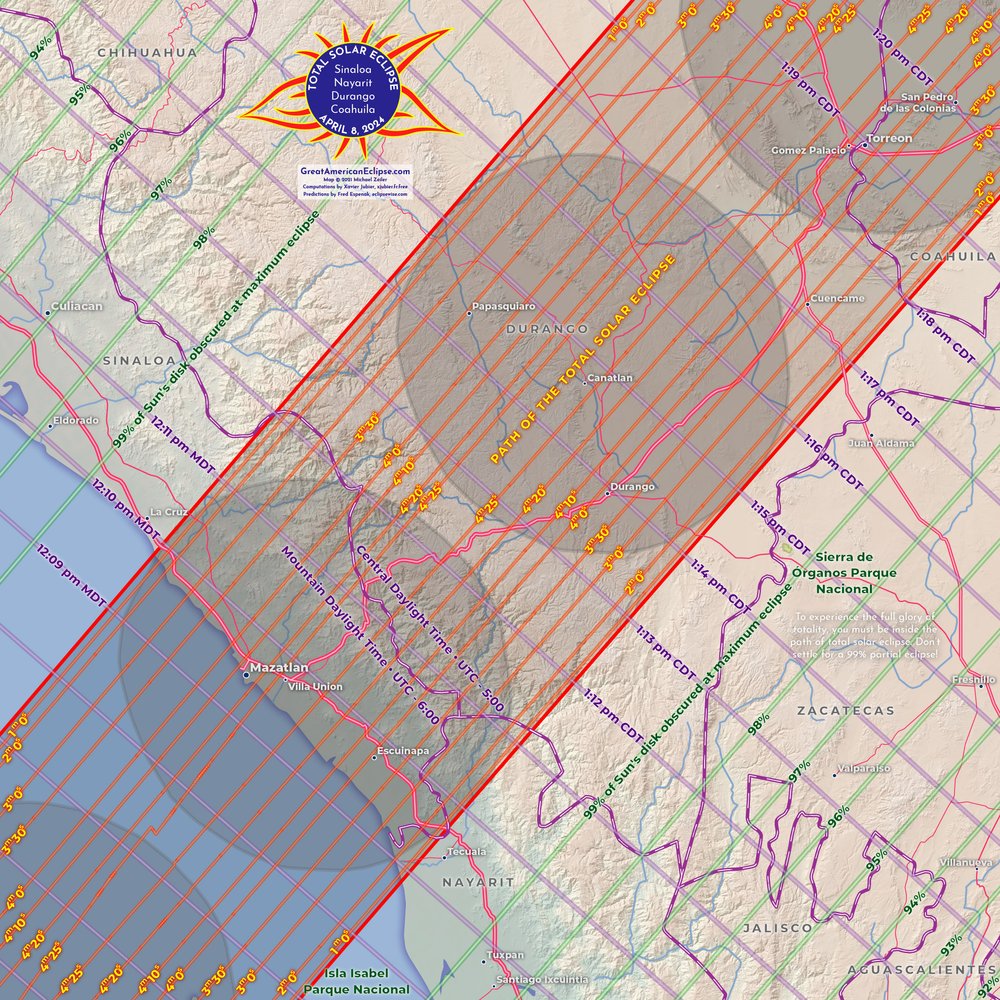
After passing over a few remote islands off the coast of Mexico, the moon's 124-mile-wide (199 kilometers) shadow will reach North America at Mazatlán at 11:07 a.m. MST.
Durango, Chihuahua, Coahuila, Texas
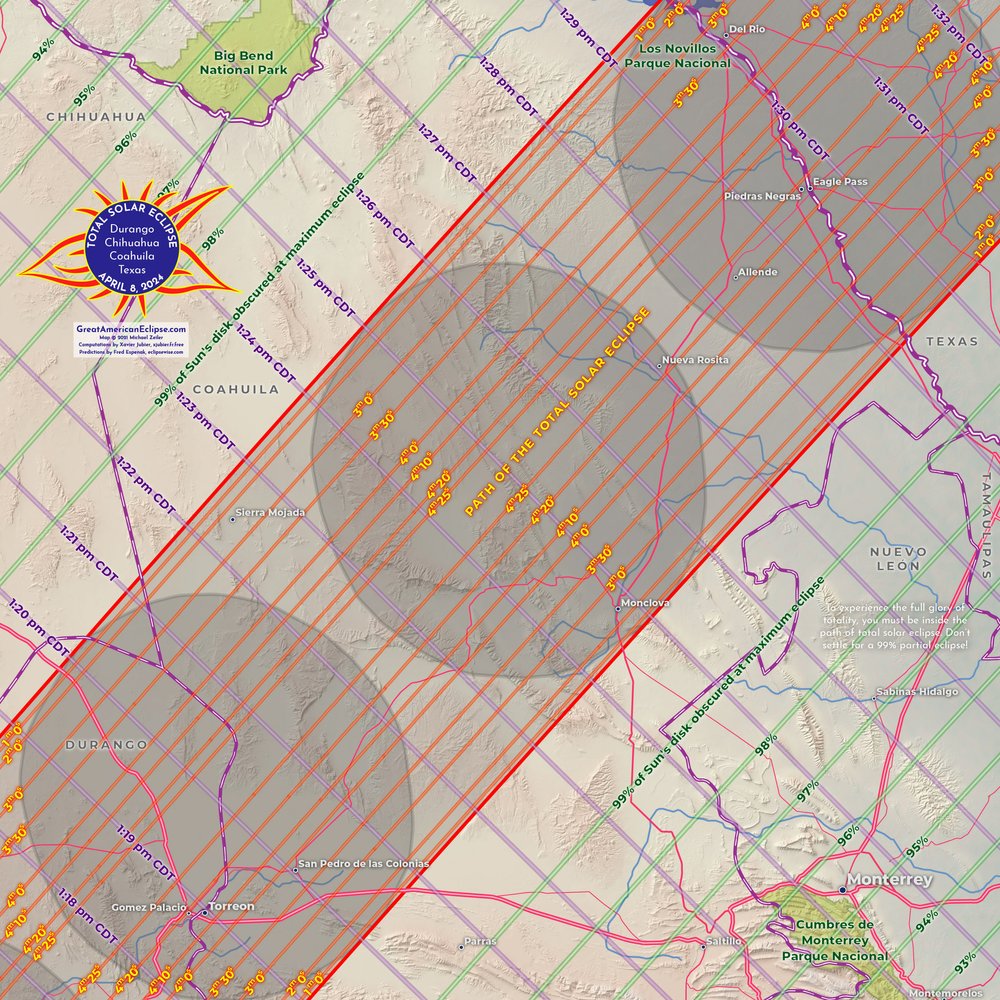
The maximum duration of totality for northern Mexico will be 4 mins 28 secs at Nazas, Durango.
Coahuila, Texas
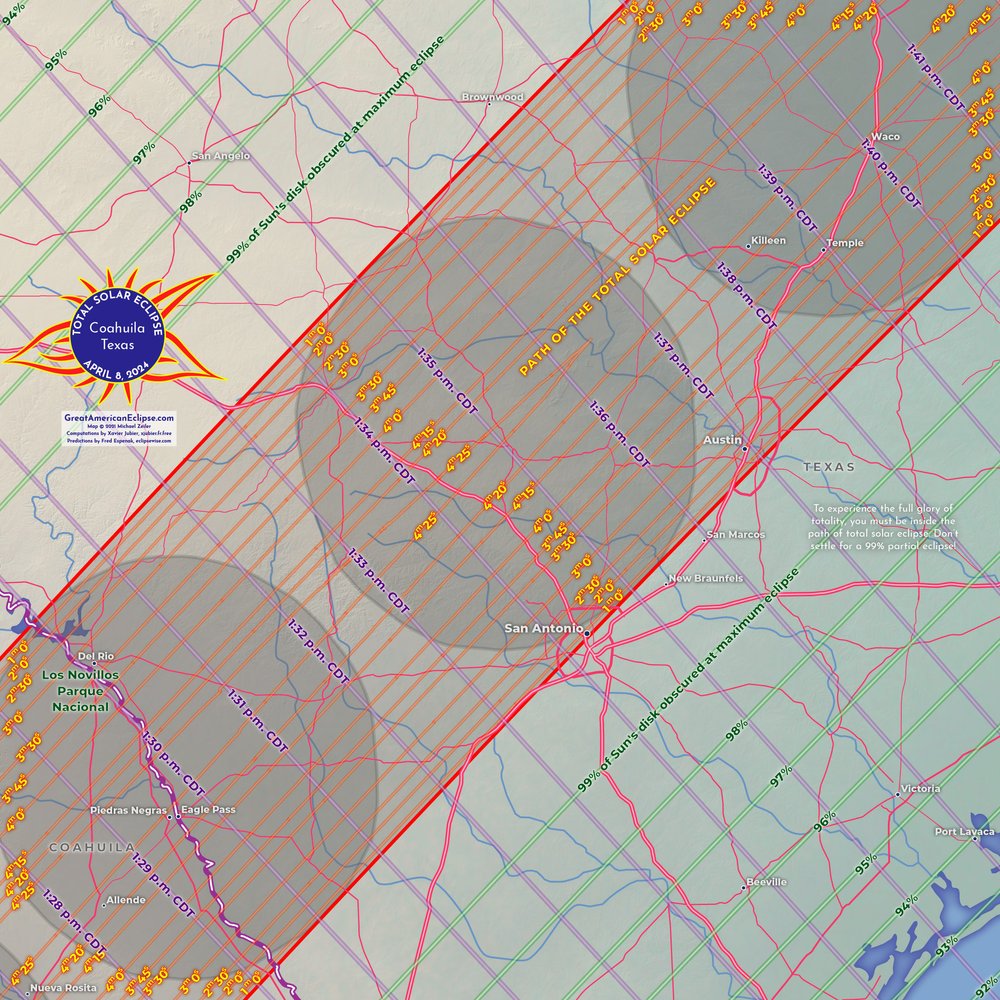
The path of totality will enter the U.S. at 1:27 p.m. CDT. At that time the path of totality will be 120 miles (195 km) wide.
Texas, Oklahoma, Arkansas.
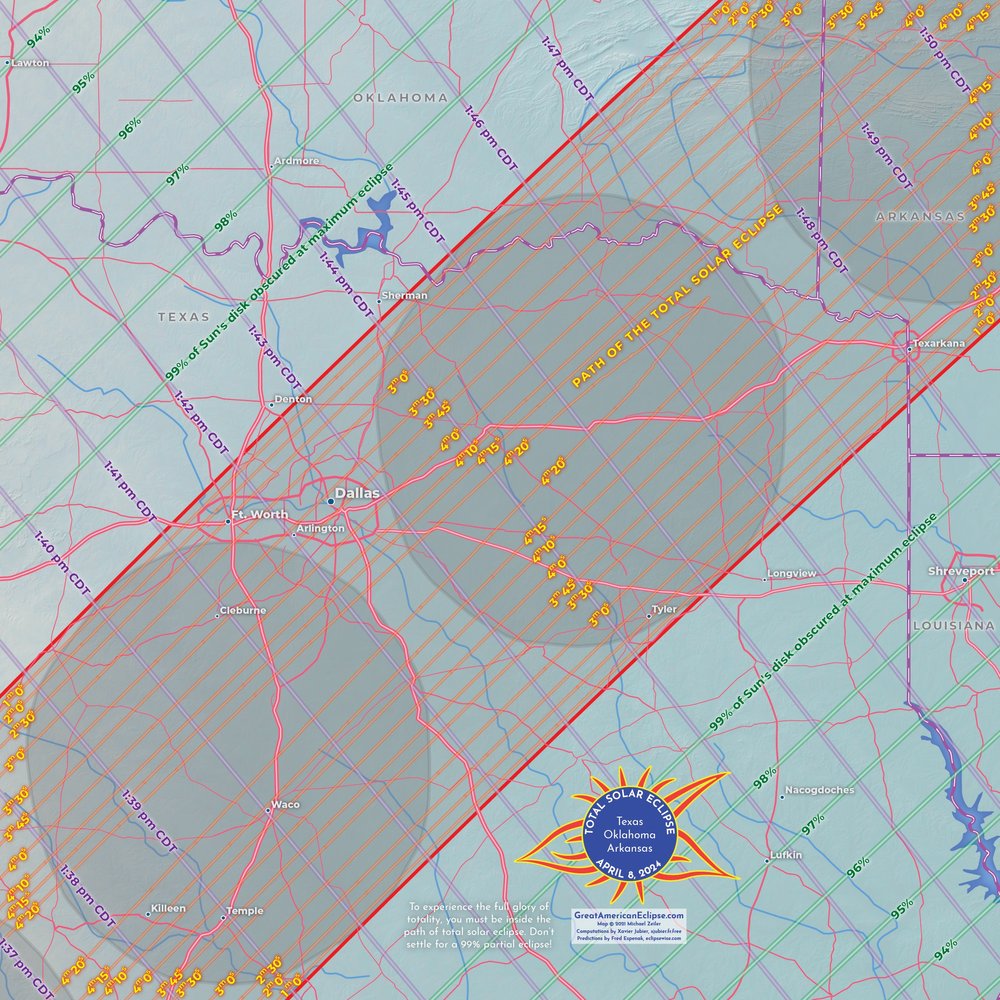
The maximum duration of totality for Texas will be 4 minutes and 26 seconds at Radar Base, Texas.
Oklahoma, Arkansas, Missouri
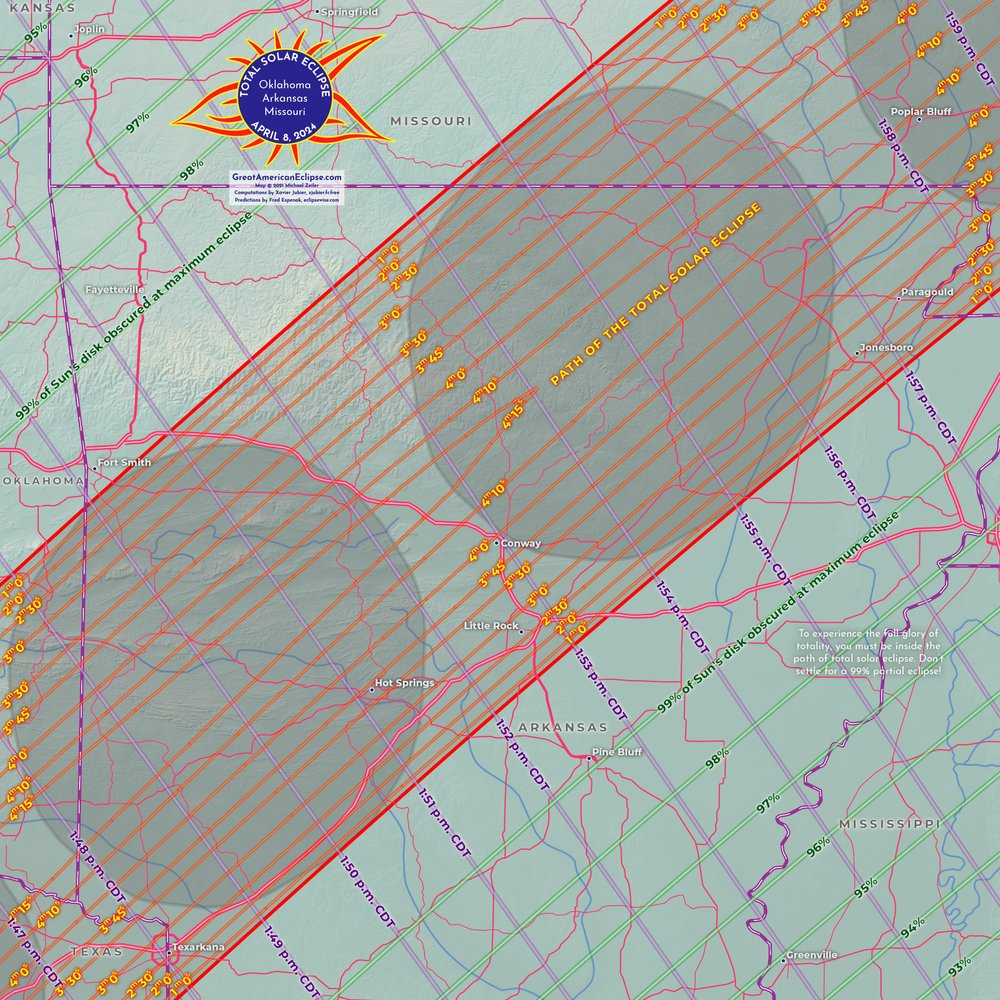
The eclipse will then reach the Midwest at the Arkansas-Missouri border at 1:53 p.m. CDT. At this point the path of totality will be 116 miles (187 km) wide.
Arkansas, Missouri, Kentucky, Tennessee, Illinois
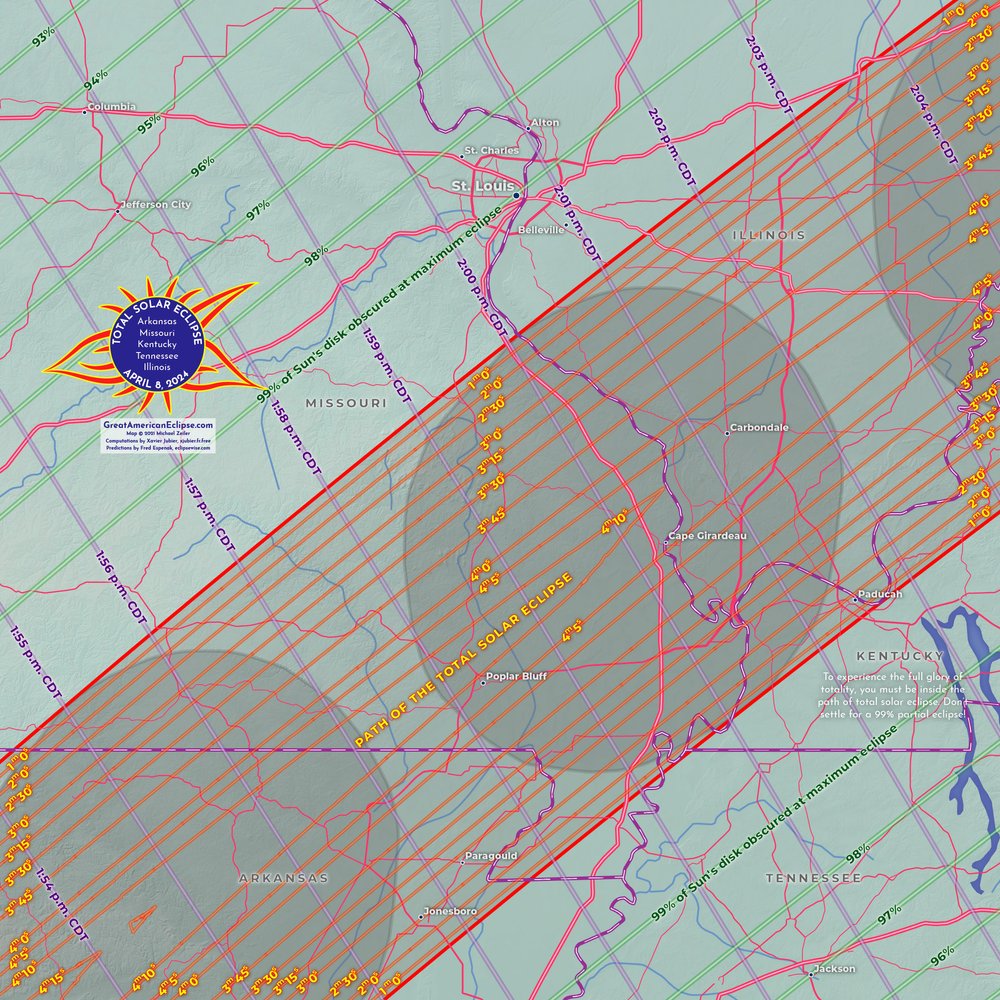
The maximum duration of totality in Missouri will be 4 minutes and 13 seconds at Fourche Creek Conservation Area, Missouri.
Illinois, Kentucky, Indiana, Ohio
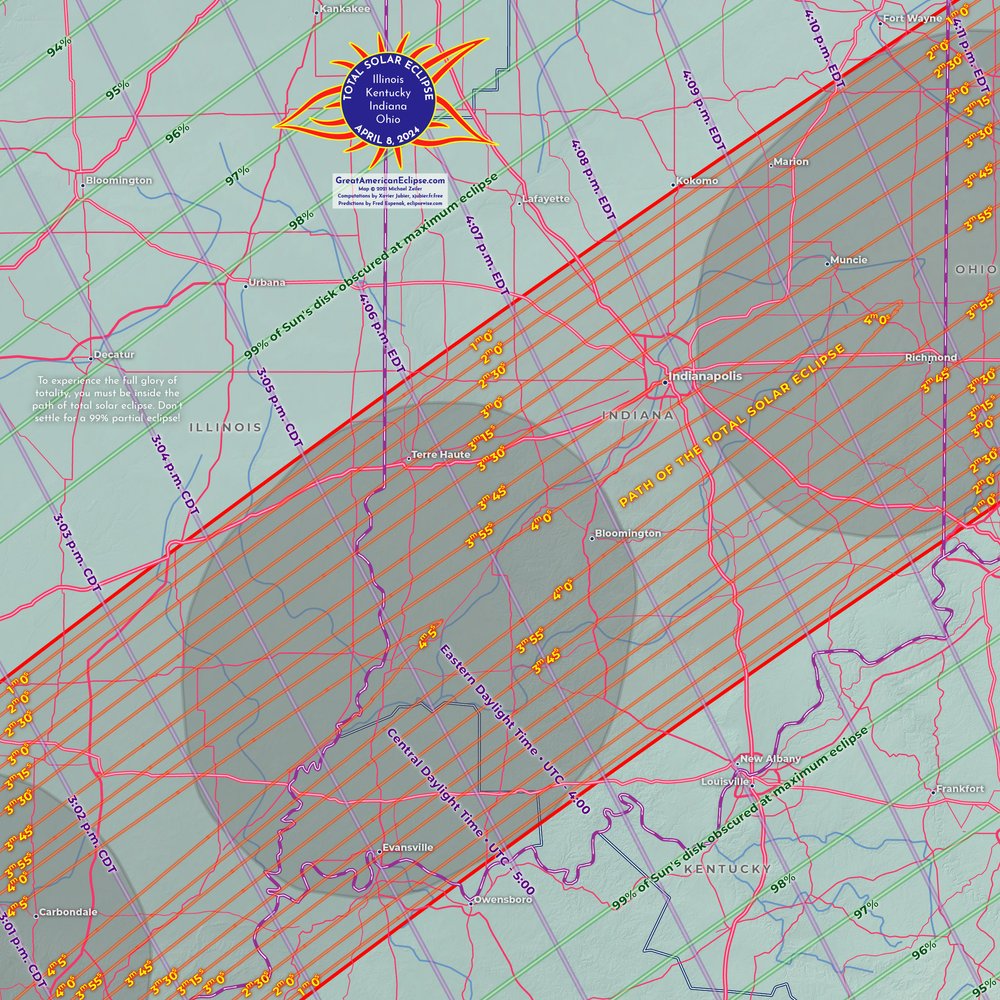
The 2024 total solar eclipse will cross an identical region also visited by the 2017 total solar eclipse in locations such as Cape Girardeau and Carbondale. These locations are lucky enough to enjoy two total solar eclipses in just six years.
Indiana, Michigan, Ohio, Ontario
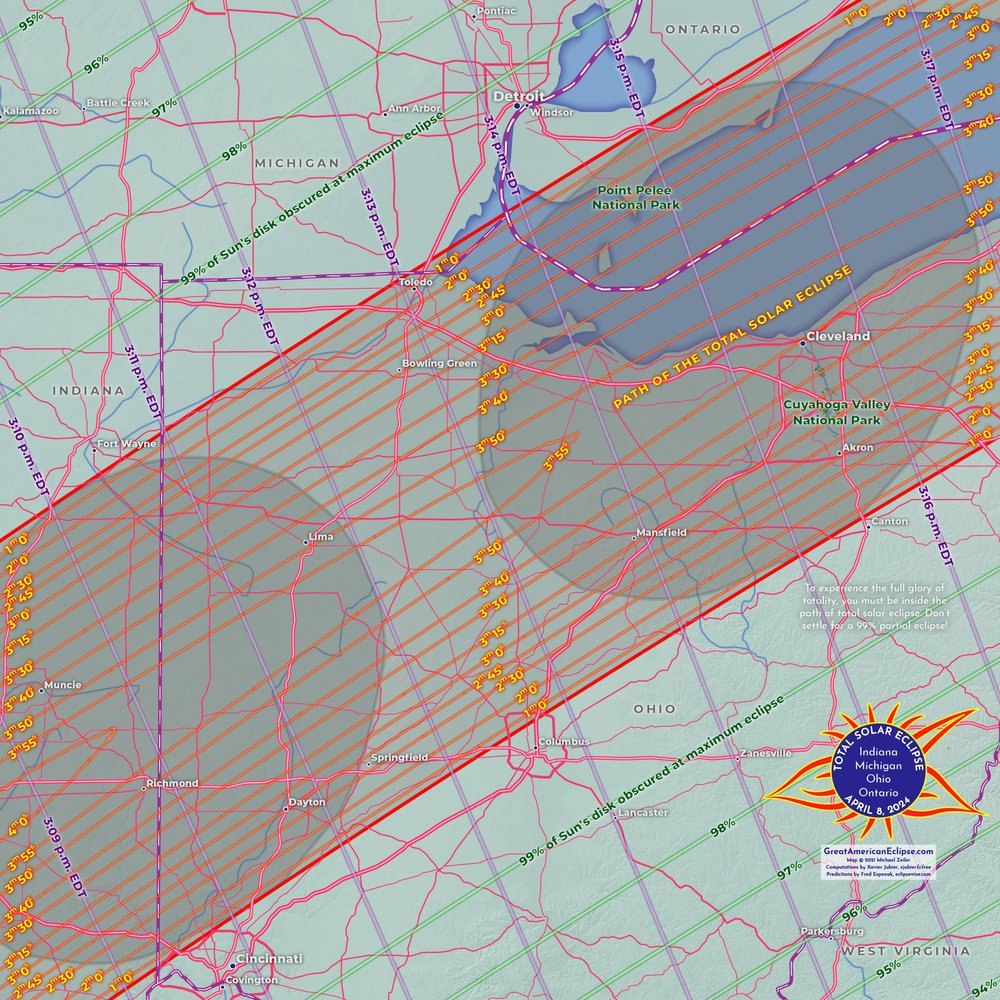
The largest draws in the Midwest are Indianapolis (population 882,000) and Cleveland (368,000), both of which are close to the centerline.
Ohio, Pennsylvania, New York, Ontario
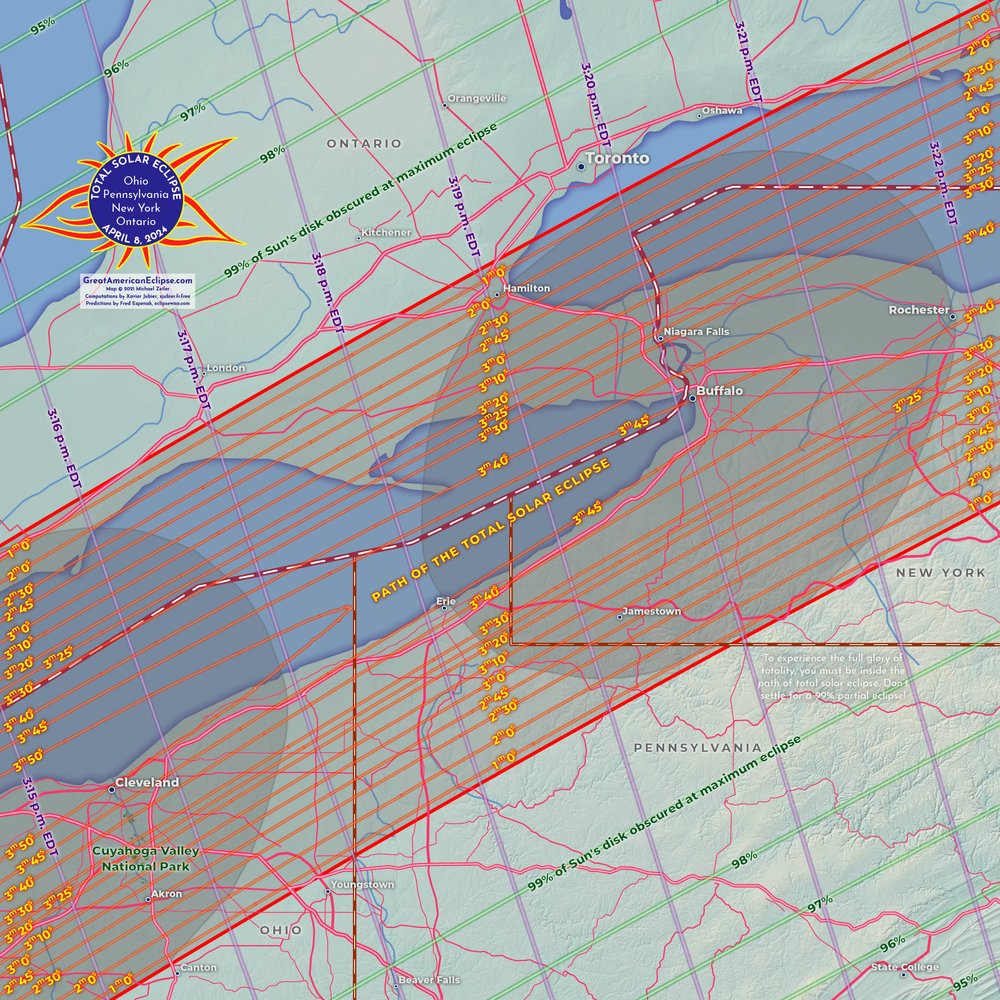
The total solar eclipse will enter the Northeastern U.S. at the Ohio-Pennsylvania border at 3:15 pm EDT. At this point the path of totality is 111 miles (179 km) wide.
New York, Ontario, Quebec
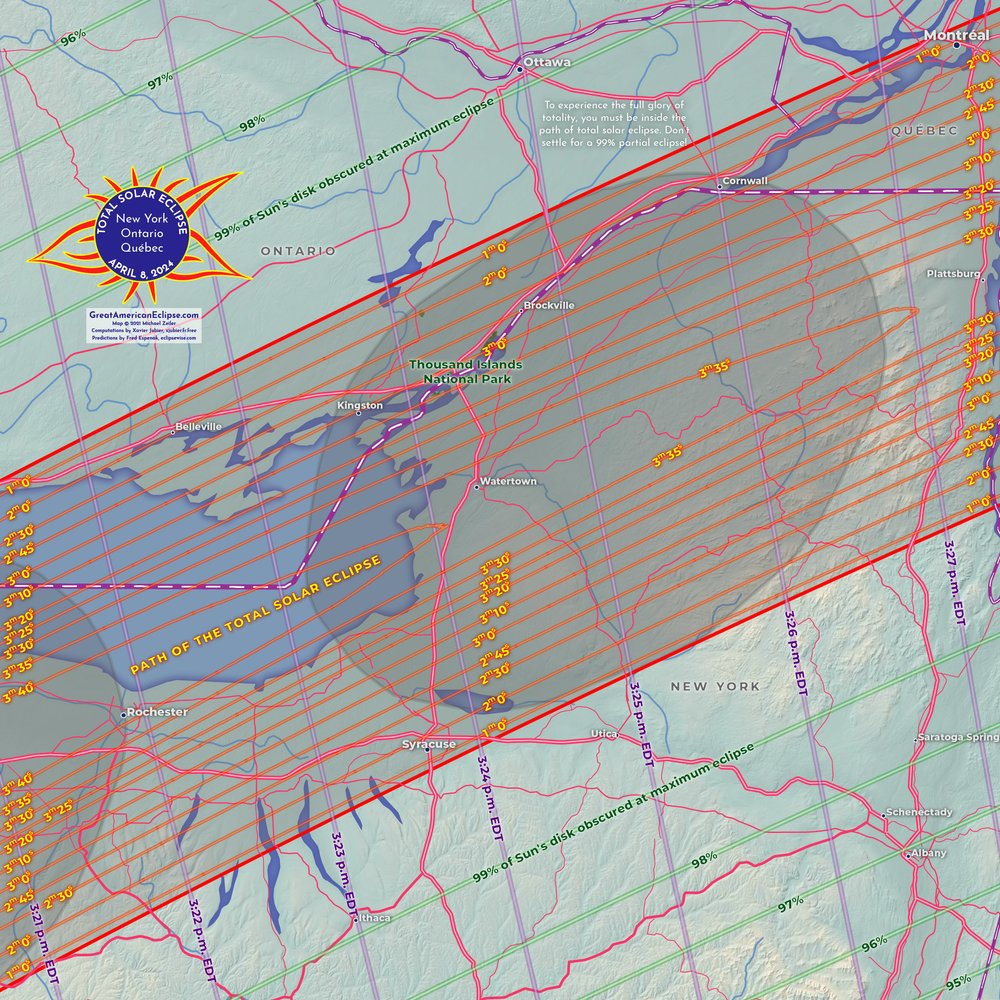
The solar eclipse will enter Ontario at Peelee Island in Lake Eerie at 3:12 EDT. The path of totality will be 112 miles (181 km) wide.
New York, Vermont, New Hampshire, Maine, Quebec
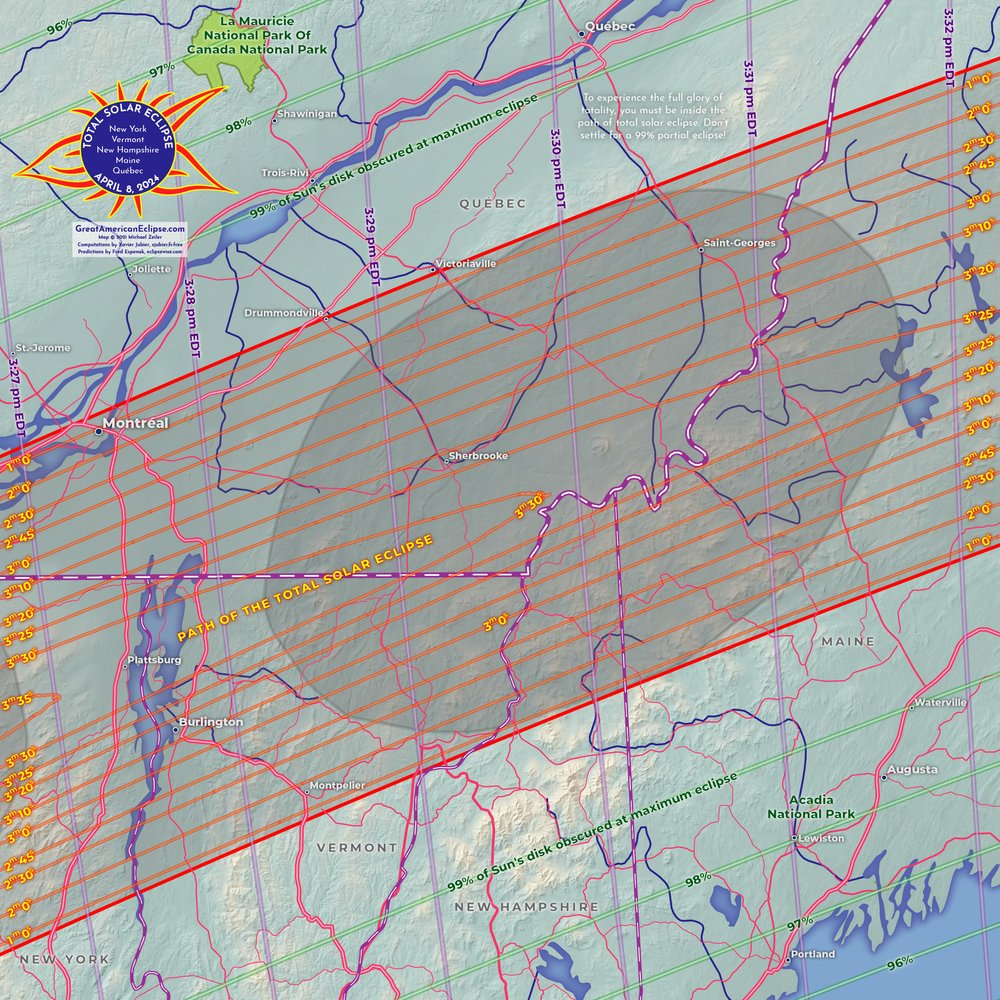
This will be the first total solar eclipse to occur over Canada since February 26, 1979.
Quebec, Maine, New Brunswick
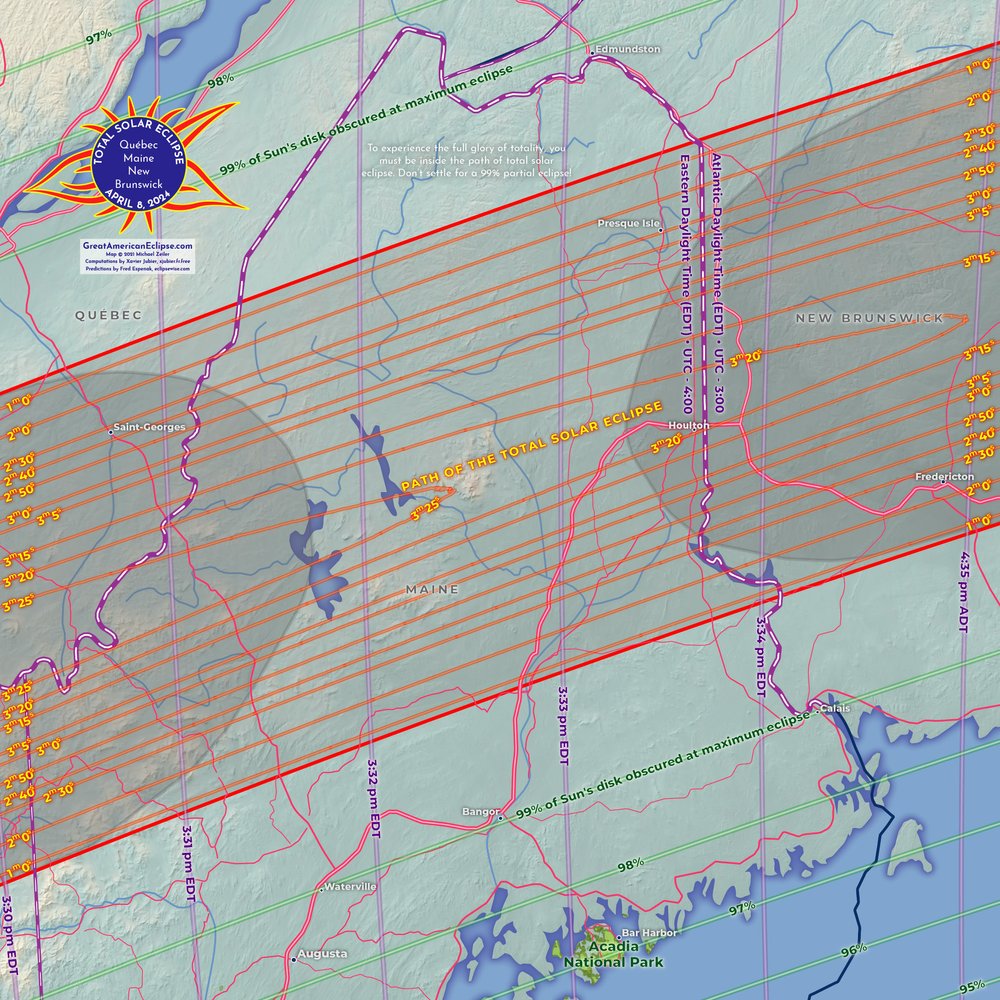
Totality will then close back into the U.S at Maine before heading out into the Atlantic Canadian provinces.
New Brunswick, Prince Edward Island
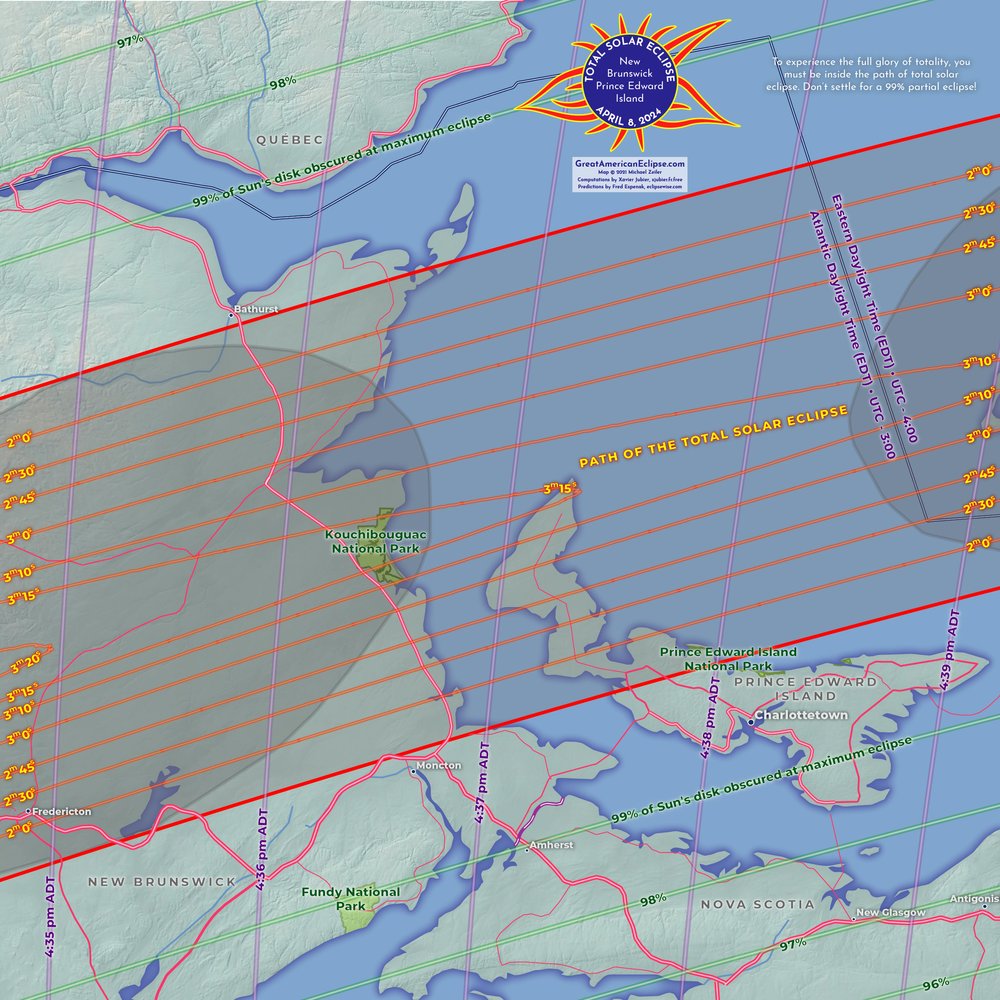
The total solar eclipse will then travel through New Brunswick, Prince Edward Island and Newfoundland.
Nova Scotia, Newfoundland and Labrador
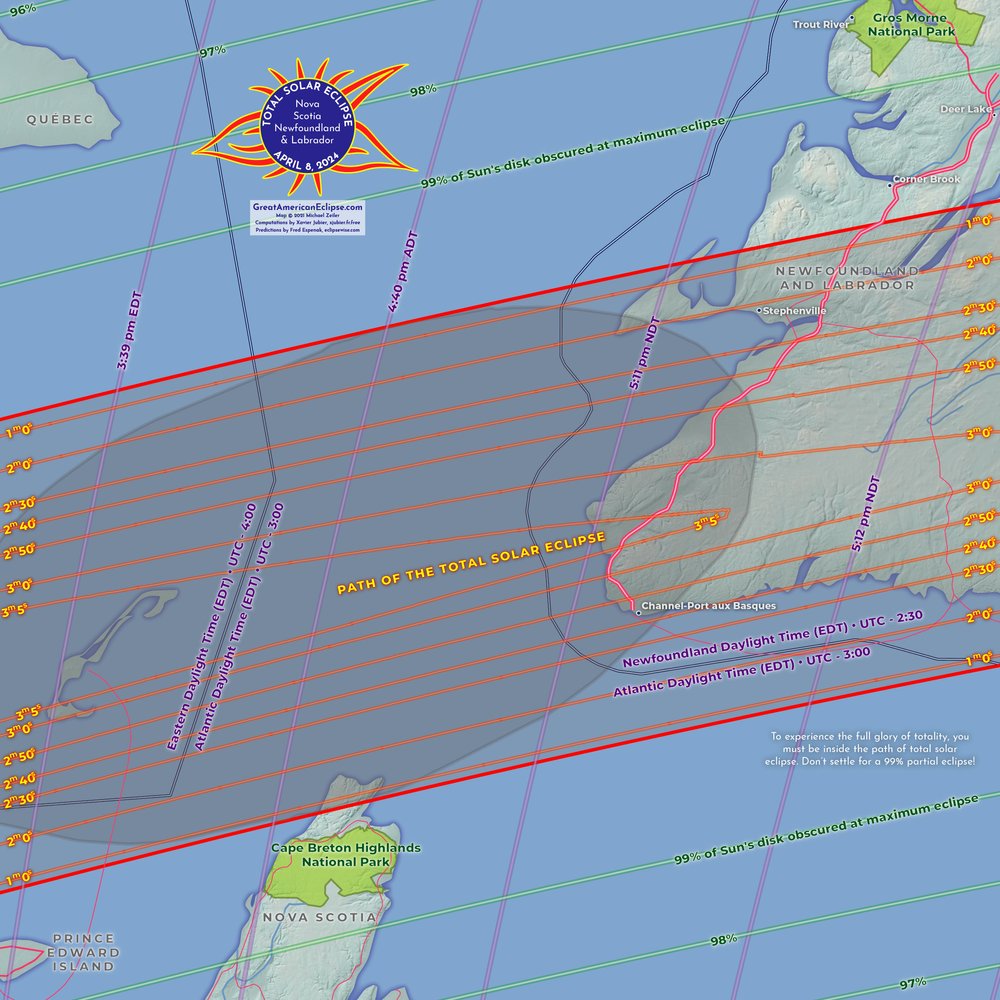
The total solar eclipse's shadow will depart at 5:16 p.m. NDT.
Solar eclipse viewing advice
To safely view all of this total solar eclipse, you must use solar filters. Only those in the path of totality will briefly be able to remove them to see the sun's corona with their naked eyes. Those not in the path of totality must keep them on the entire time.
Everyone observing the partial phases of this eclipse — and for those outside the path of totality, that's the entire event — will need to wear solar eclipse glasses while cameras, telescopes and binoculars will need solar filters placed in front of their lenses.
Our how to observe the sun safely guide tells you everything you need to know about safe solar observations.
Join our Space Forums to keep talking space on the latest missions, night sky and more! And if you have a news tip, correction or comment, let us know at: community@space.com.
Get the Space.com Newsletter
Breaking space news, the latest updates on rocket launches, skywatching events and more!

Daisy Dobrijevic joined Space.com in February 2022 having previously worked for our sister publication All About Space magazine as a staff writer. Before joining us, Daisy completed an editorial internship with the BBC Sky at Night Magazine and worked at the National Space Centre in Leicester, U.K., where she enjoyed communicating space science to the public. In 2021, Daisy completed a PhD in plant physiology and also holds a Master's in Environmental Science, she is currently based in Nottingham, U.K. Daisy is passionate about all things space, with a penchant for solar activity and space weather. She has a strong interest in astrotourism and loves nothing more than a good northern lights chase!
